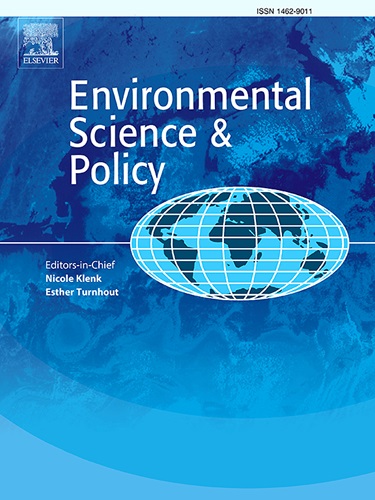湄公河流域抗洪措施的系统调查
IF 5.2
2区 环境科学与生态学
Q1 ENVIRONMENTAL SCIENCES
引用次数: 0
摘要
由于日益极端的天气条件,湄公河遭遇了严重的洪水挑战。尽管面临这些挑战,湄公河流域(MRB)的居民已经以各种方式发展并展示了非凡的抗洪能力,在洪水易发的环境中建立了一个充满活力和繁荣的社会经济系统。本研究对来自Scopus和Web of Science数据集的460个检索结果进行了系统回顾和荟萃分析,涵盖1999年至2024年的文献,重点是MRB。这篇综述的目的是通过对同行评议的文献进行全面的范围审查,调查MRB中人们为提高其抗洪能力而制定的措施。检讨的结果如下:(1)共确定了85项措施,并根据其特点将其分为9个措施组和3种方法;(2)统计分析表明利益相关者合作的趋势有所上升,超过66% %的上述措施涉及协调方法,而不是严格的自上而下或自下而上;(3)基础设施和工程投资,以及农业技术进步;(4)维恩图显示了不同国家采用的重叠措施,越南、柬埔寨和泰国为提高抗洪能力做出了重大努力。本研究为决策者和研究人员了解该地区的洪水恢复力状况提供了有价值的见解,为未来有效的洪水管理框架和研究方法的发展提供了支持。本文章由计算机程序翻译,如有差异,请以英文原文为准。
A systematic investigation of flood resilience measures in the Mekong River Basin
The Mekong River has encountered severe flooding challenges due to increasingly extreme weather conditions. Despite these challenges, residents of the Mekong River Basin (MRB) have developed and demonstrated remarkable flood resilience in various ways, enabling a dynamic and thriving socio-economic system in the flood-prone environment. This study presents a systematic review and meta-analysis based on 460 search results from Scopus and Web of Science datasets, covering literature from 1999 to 2024, focused on the MRB. The review aims to investigate the measures developed by people in the MRB to improve their flood resilience, as determined through a comprehensive scoping review of peer-reviewed literature. The review revealed the following findings: (1) A total of 85 measures were identified and categorized into nine measure groups and three approaches based on their characters, (2) statistical analysis indicates a rising trend in stakeholder cooperation, with over 66 % of the total mentioned measures involving coordinated approaches rather than being strictly top-down or bottom-up, (3) infrastructure and engineering investments, as well as advancements in agricultural technology, were the dominant measures observed across Mekong River Basin countries, and (4) a Venn diagram illustrates overlapping measures applied across various countries, with Vietnam, Cambodia, and Thailand contributing significant efforts to improving flood resilience. This study provides valuable insights for policymakers and researchers into the flood resilience situation within the region, supporting the development of effective future flood management frameworks and research approaches.
求助全文
通过发布文献求助,成功后即可免费获取论文全文。
去求助
来源期刊

Environmental Science & Policy
环境科学-环境科学
CiteScore
10.90
自引率
8.30%
发文量
332
审稿时长
68 days
期刊介绍:
Environmental Science & Policy promotes communication among government, business and industry, academia, and non-governmental organisations who are instrumental in the solution of environmental problems. It also seeks to advance interdisciplinary research of policy relevance on environmental issues such as climate change, biodiversity, environmental pollution and wastes, renewable and non-renewable natural resources, sustainability, and the interactions among these issues. The journal emphasises the linkages between these environmental issues and social and economic issues such as production, transport, consumption, growth, demographic changes, well-being, and health. However, the subject coverage will not be restricted to these issues and the introduction of new dimensions will be encouraged.
 求助内容:
求助内容: 应助结果提醒方式:
应助结果提醒方式:


